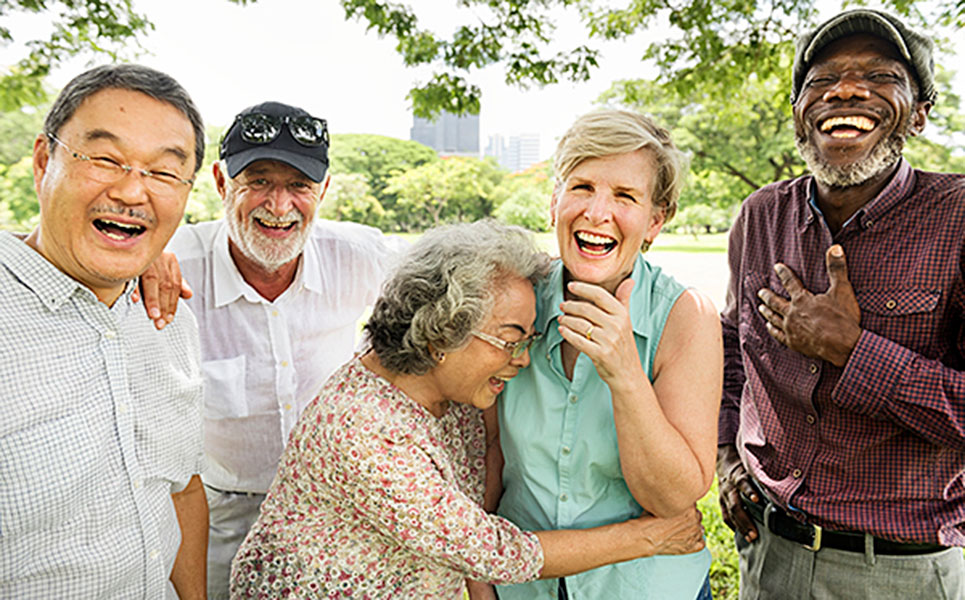Aging is an inevitable part of life’s journey, yet it’s often accompanied by misconceptions and fears. The process of growing older is filled with both challenges and opportunities and how we navigate them can profoundly impact our quality of life. In this comprehensive guide, we will explore the keys to healthy aging, dispel common myths, and offer practical strategies to help individuals not just survive but thrive as they age.
- Understanding Healthy Aging: As we age, we experience a myriad of life changes, from transitions in our careers to shifts in family dynamics and health challenges. However, healthy aging is not just about avoiding illness or disability—it’s about maintaining physical, emotional, and social well-being. It involves adapting to change, finding joy and purpose, staying connected to others, and embracing new experiences.
2. Dispelling Myths About Aging: One of the biggest barriers to healthy aging is the prevalence of myths and misconceptions surrounding the process. From the belief that aging inevitably leads to poor health to the notion that memory loss is unavoidable, these myths can shape our attitudes and behaviors as we grow older. By debunking these myths, we empower individuals to take control of their health and well-being.
3. Coping with Change: Change is a constant in life, and learning to adapt to it is essential for healthy aging. Whether it’s adjusting to retirement, coping with the loss of a loved one, or facing health challenges, resilience is key. By focusing on gratitude, acknowledging and expressing emotions, accepting the things we cannot change, and finding the silver lining in difficult situations, we can navigate life’s ups and downs with grace and resilience.
4. Finding Meaning and Joy: Maintaining a sense of purpose and fulfillment is crucial for healthy aging. As we transition into different stages of life, we may need to redefine what brings us joy and satisfaction. Whether it’s pursuing hobbies and interests, volunteering in the community, or spending time with loved ones, finding meaning in our daily lives can help us stay engaged and fulfilled.
5. Staying Connected: Social connections are a vital aspect of healthy aging, yet they can become more challenging to maintain as we grow older. Building and nurturing relationships with friends, family, and community members is essential for emotional well-being and support. Whether it’s through regular social activities, volunteering, or joining support groups, staying connected can help combat feelings of loneliness and isolation.
6. Staying Active and Vital: Physical health plays a significant role in healthy aging, and staying active is key to maintaining vitality and independence. Regular exercise not only strengthens the body but also improves mood, cognitive function, and overall well-being. Whether it’s walking, swimming, yoga, or strength training, finding activities that are enjoyable and sustainable is crucial for long-term health.
7. Eating Well: Nutrition is another critical component of healthy aging, yet it’s often overlooked. As we age, our nutritional needs may change, and maintaining a balanced diet is essential for energy, immunity, and overall health. Emphasizing whole foods, fruits, vegetables, lean proteins, and healthy fats while minimizing processed foods and sugars can help support optimal health and vitality.
8. Prioritizing Sleep: Quality sleep is essential for healthy aging, yet many older adults struggle with sleep disturbances. Establishing a relaxing bedtime routine, creating a conducive sleep environment, and practicing good sleep hygiene can help improve sleep quality and duration. Prioritizing sleep not only enhances physical health but also supports cognitive function and emotional well-being.
9. Keeping the Mind Sharp: Cognitive health is a critical aspect of healthy aging, and keeping the mind active and engaged is essential for preserving memory and cognitive function. Engaging in mentally stimulating activities such as puzzles, games, learning new skills, and socializing can help keep the brain sharp and reduce the risk of cognitive decline.
Conclusion: Healthy aging is not just about adding years to our lives but adding life to our years. By dispelling myths, embracing change, finding joy and purpose, staying connected, staying active, and prioritizing self-care, individuals can thrive as they age. By adopting a holistic approach to aging that encompasses physical, emotional, and social well-being, we can all enjoy a fulfilling and vibrant later life.
